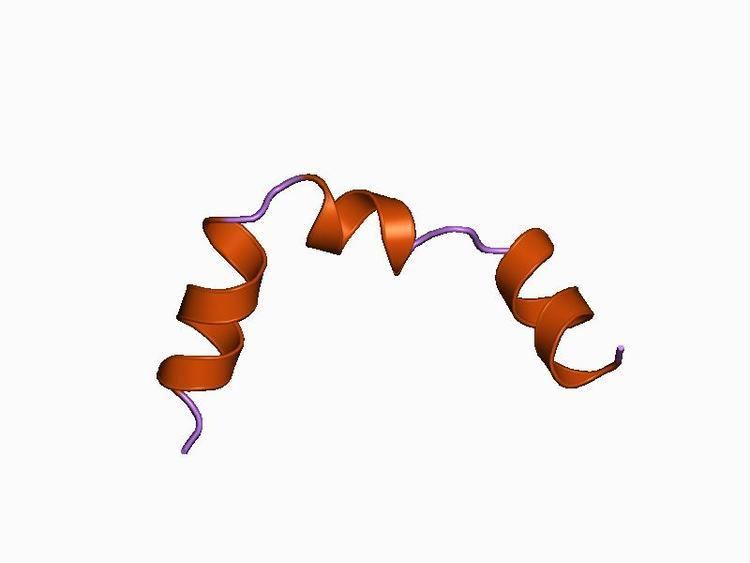Symbol 7tm_2 InterPro IPR000832 TCDB 9.A.14 | Pfam PF00002 PROSITE PDOC00559 OPM superfamily 6 | |
 | ||
Secretin family of 7 transmembrane receptors is a family of evolutionarily related proteins.
Contents
This family is known as Family B, the secretin-receptor family or family 2 of the G-protein-coupled receptors (GPCR). Many secretin receptors are regulated by peptide hormones from the glucagon hormone family.
The secretin-receptor family GPCRs include vasoactive intestinal peptide receptors and receptors for secretin, calcitonin and parathyroid hormone/parathyroid hormone-related peptides. These receptors activate adenylyl cyclase and the phosphatidyl-inositol-calcium pathway. The receptors in this family have 7 transmembrane helices, like rhodopsin-like GPCRs. However, there is no significant sequence identity between these two GPCR families and the secretin-receptor family has its own characteristic 7TM signature.
The secretin-receptor family GPCRs exist in many animal species, but have not been found in plants, fungi or prokaryotes. Three distinct sub-families (B1-B3) are recognized.
Subfamily B1
Subfamily B1 contains classical hormone receptors, such as receptors for secretin and glucagon, that are all involved in cAMP-mediated signalling pathways.
Subfamily B2
Subfamily B2 contains receptors with long extracellular N-termini, such as the leukocyte cell-surface antigen CD97; calcium-independent receptors for latrotoxin and brain-specific angiogenesis inhibitor receptors amongst others.
Subfamily B3
Subfamily B3 includes Methuselah and other Drosophila proteins. Other than the typical seven-transmembrane region, characteristic structural features include an amino-terminal extracellular domain involved in ligand binding, and an intracellular loop (IC3) required for specific G-protein coupling.
Unclassified subfamilies
Unclassified members
HCTR-5; HCTR-6; KPG 006; KPG 008
